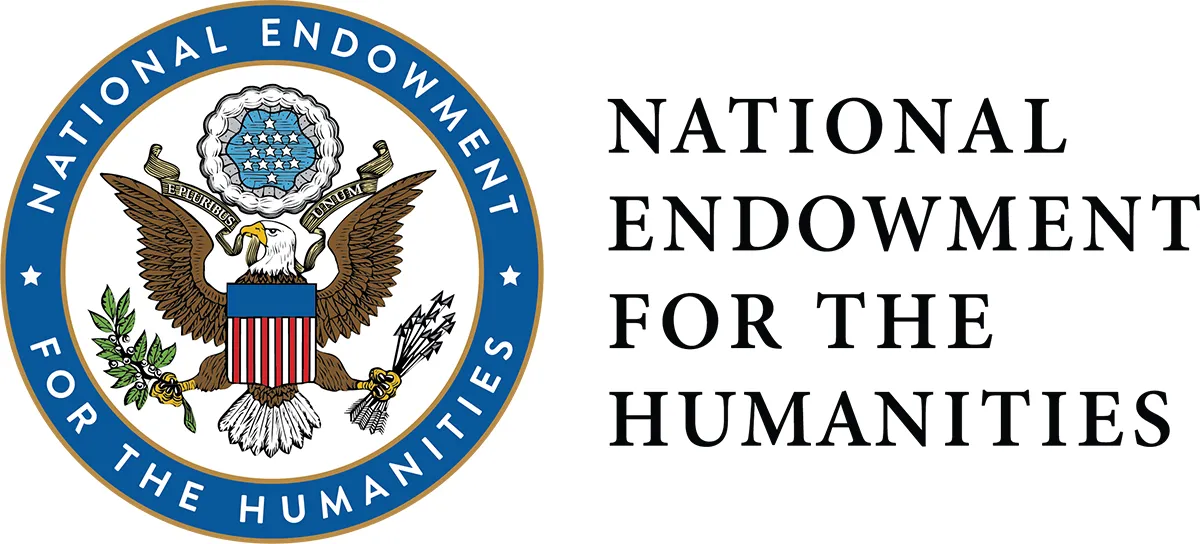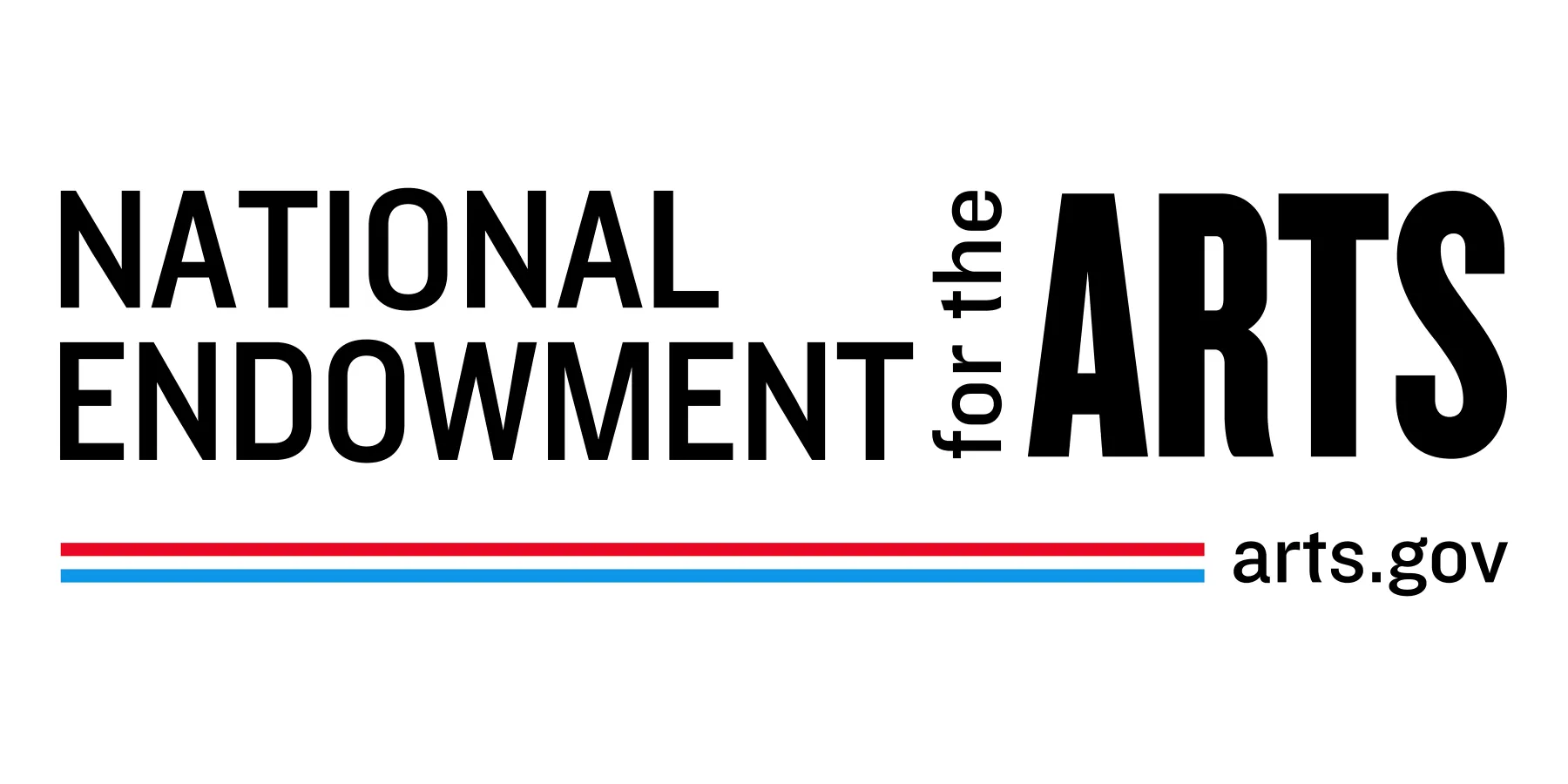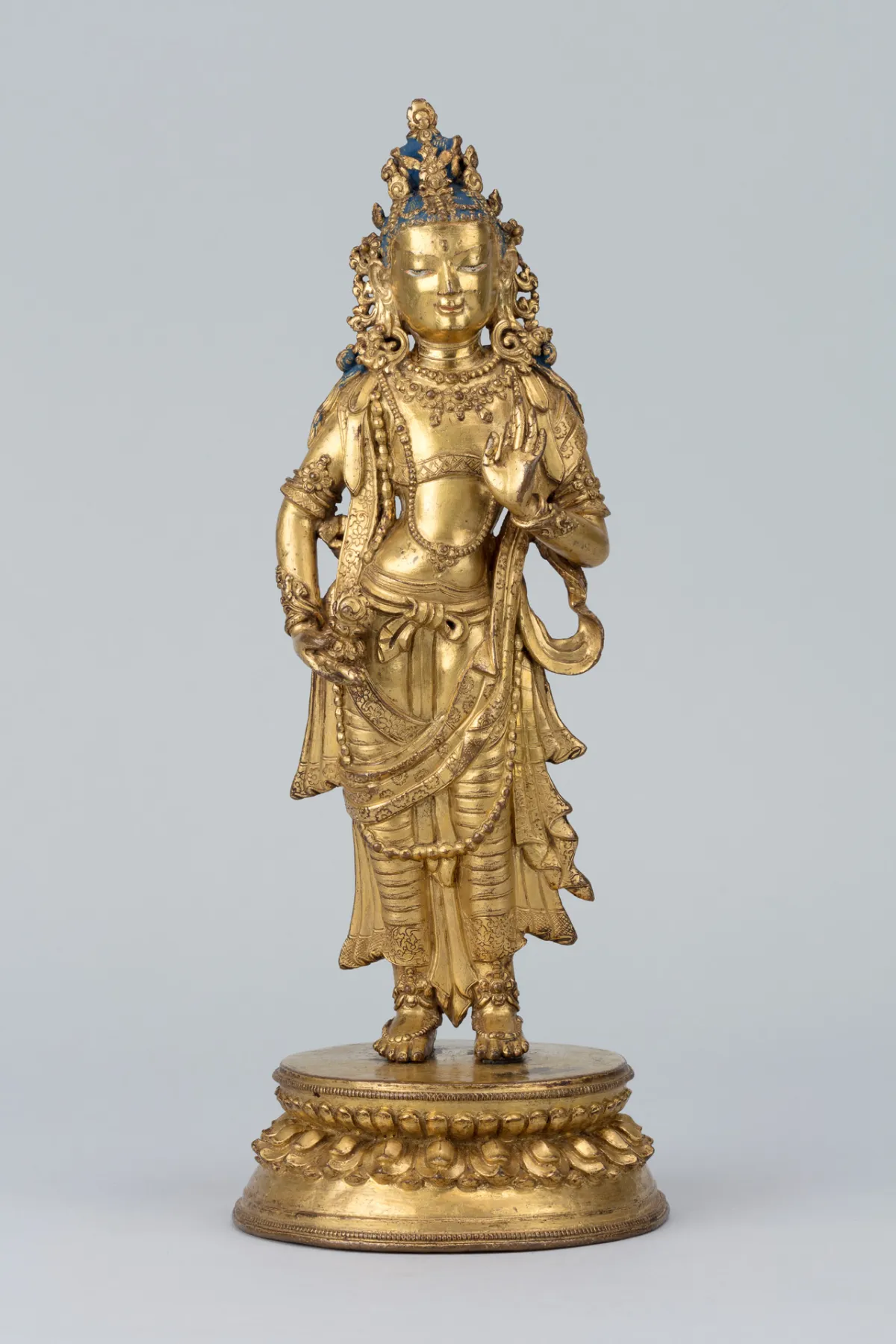Handheld Prayer Wheel
Central Tibet; early 20th century
Silver, wood
Rubin Museum of Himalayan Art
Gift of Shelley and Donald Rubin
SC2012.7.2
Gateway to Himalayan Art is a special exhibition that introduces the main forms, concepts, meanings, and living traditions of Himalayan art. The exhibition features sublime religious art created from the 13th through the 21st centuries in Tibet, Nepal, China, and Mongolia, drawn from the permanent collection of the Rubin Museum of Himalayan Art, which organized the exhibition.
At the start of the exhibition, a multimedia map orients visitors to the greater Himalayan region, which encompasses Indian, Nepalese, Bhutanese, and Tibetan cultures as well as interrelated Mongolian and Chinese traditions. Gateway to Himalayan Art invites exploration of these diverse cultural spheres through exemplary objects presented in three thematic sections: Symbols and Meanings, Materials and Technologies, and Living Practices. Traditional scroll paintings (thangkas), sculptures in various media, and ritual items comprise the diverse range of objects on view.
Exhibition Thematic Sections
The Symbols and Meanings section juxtaposes paintings and sculptures to introduce the iconography of Buddhas and bodhisattvas; Tantric, female, and wrathful deities; Hindu gods and goddesses; and spiritually accomplished humans such as arhats, Mahasiddhas, and great religious teachers (lamas).
The Materials and Technologies section features in-depth displays detailing the making of a Tibetan thangka painting, the process of Nepalese lost-wax metal casting, the creation of clay, wood, and stone sculptures, and the fabrication of manuscripts and printed texts and images. It is augmented with artists’ tools and materials, and videos.
The section on Living Practices uses paintings, sculptures, ritual implements, and medical instruments to explore sacred rituals undertaken by Buddhists to accrue spiritual merit and achieve secular aims. It also introduces traditions of narrative and instructive Buddhist paintings and concludes with an elaborate wooden shrine housing sacred images, texts, and ritual objects to encourage visitors to consider the original context of the kinds of devotional art featured in the exhibition.
This traveling exhibition is organized and provided by the Rubin Museum of Himalayan Art and curated by Senior Curator of Himalayan Art Elena Pakhoutova. Gateway to Himalayan Art is an integral component of the Rubin Museum’s Project Himalayan Art, a three-part initiative that also includes the publication Himalayan Art in 108 Objects and a digital platform. Together they provide introductory resources for learning about and teaching Himalayan art.

In addition to introducing an astonishing array of beautiful and meaningful works of art, Gateway to Himalayan Art includes informative videos explaining a variety of religious, cultural, and artistic practices, audio recordings from Himalayan communities that highlight living traditions, and opportunities to dive deeper into the rich contextual material available on the Rubin’s integrated digital platform.
In conjunction with the JSMA’s presentation of Gateway to Himalayan Art, the Rubin is generously lending two additional global contemporary works by Shraddha Shrestha and Tsherin Sherpa that include elements from traditional Himalayan Buddhist art to welcome visitors in the museum lobby.
Gateway to Himalayan Art has already been shown at the Lehigh University Art Galleries in Bethlehem, Pennsylvania, and the McMullen Museum of Art at Boston College in 2023; the Harn Museum of Art at the University of Florida in Gainesville and the Frank Museum of Art at Otterbein University in Westerville, Ohio, in 2024; and the Utah Museum of Fine Arts at the University of Utah in Salt Lake City and the Flaten Art Museum at St. Olaf College in Northfield, Minnesota, in 2025. After it closes at the JSMA, the exhibition will travel to the USC Pacific Asia Museum at the University of Southern California in Pasadena.
The Rubin recently transitioned to being a “museum without walls,” sharing its collection and expertise through traveling exhibitions, object loans, grant opportunities, and partnerships with the goal of encouraging understanding and appreciation of Himalayan art worldwide.
Lead support is provided by the Ellen Bayard Weedon Foundation, Bob and Lois Baylis, Barbara Bowman, the E. Rhodes and Leona B. Carpenter Foundation, Noah P. Dorsky, Fred Eychaner, Christopher J. Fussner, the Estate of Lisina M. Hoch, Matt and Ann Nimetz, The Randleigh Foundation Trust, Shelley and Donald Rubin, and Jesse Smith and Annice Kenan.
Major support is provided by Anne and Albert Chao, Daphne Hoch Cunningham and John Cunningham, Stephen and Sharon Davies, the Edward & Elizabeth Gardner Foundation, Janet Gardner, Mimi Gardner Gates, Hongwei Li, Max Meehan, the Monimos Foundation, Edward O’Neill, The Prospect Hill Foundation, Sarah and Craig Richardson, Rossi & Rossi, the Andrew Sabin Family Foundation, Namita and Arun Saraf, Eric and Alexandra Schoenberg, Eileen Caulfield Schwab, UOVO, Sandy Song Yan, and the Zhiguan Museum of Art.

Project Himalayan Art has been made possible in part by a major grant from the National Endowment for the Humanities: Democracy demands wisdom.
Any views, findings, conclusions, or recommendations expressed in this initiative, do not necessarily represent those of the National Endowment for the Humanities.
This project was made possible in part by the Institute of Museum and Library Services MA-253379-OMS-23.
The views, findings, conclusions or recommendations expressed in this project do not necessarily represent those of the Institute of Museum and Library Services.


The publication Himalayan Art in 108 Objects was supported in part by the National Endowment for the Arts.
Leadership support for Project Himalayan Art is provided by the Henry Luce Foundation.

Selected Artworks from the Exhibition

| Kham region, eastern Tibet; 19th century
| Pigments on cloth
| Rubin Museum of Himalayan Art
| Gift of the Shelley & Donald Rubin Foundation
| F1997.7.2 (HAR 99)

| Tibet; 19th century
| Pigments on cloth
| Rubin Museum of Himalayan Art
| Gift of Shelley and Donald Rubin
| C2006.66.164 (HAR 157)

| Tibet; 14th–15th century
| Pigments on cloth
| Rubin Museum of Himalayan Art
| Gift of Shelley and Donald Rubin
| C2006.66.138 (HAR 97)

| Tibet; 17th century
| Gilt copper alloy with pigment
| Rubin Museum of Himalayan Art
| Gift of the Shelley & Donald Rubin Foundation
| F1997.12.4 (HAR 700040)



